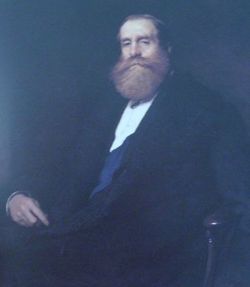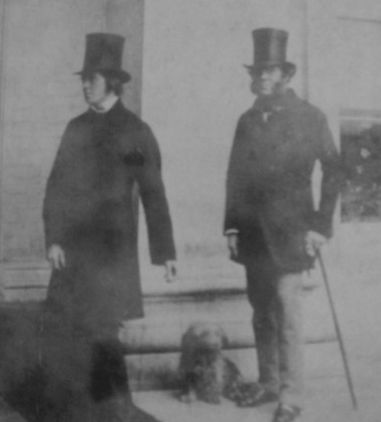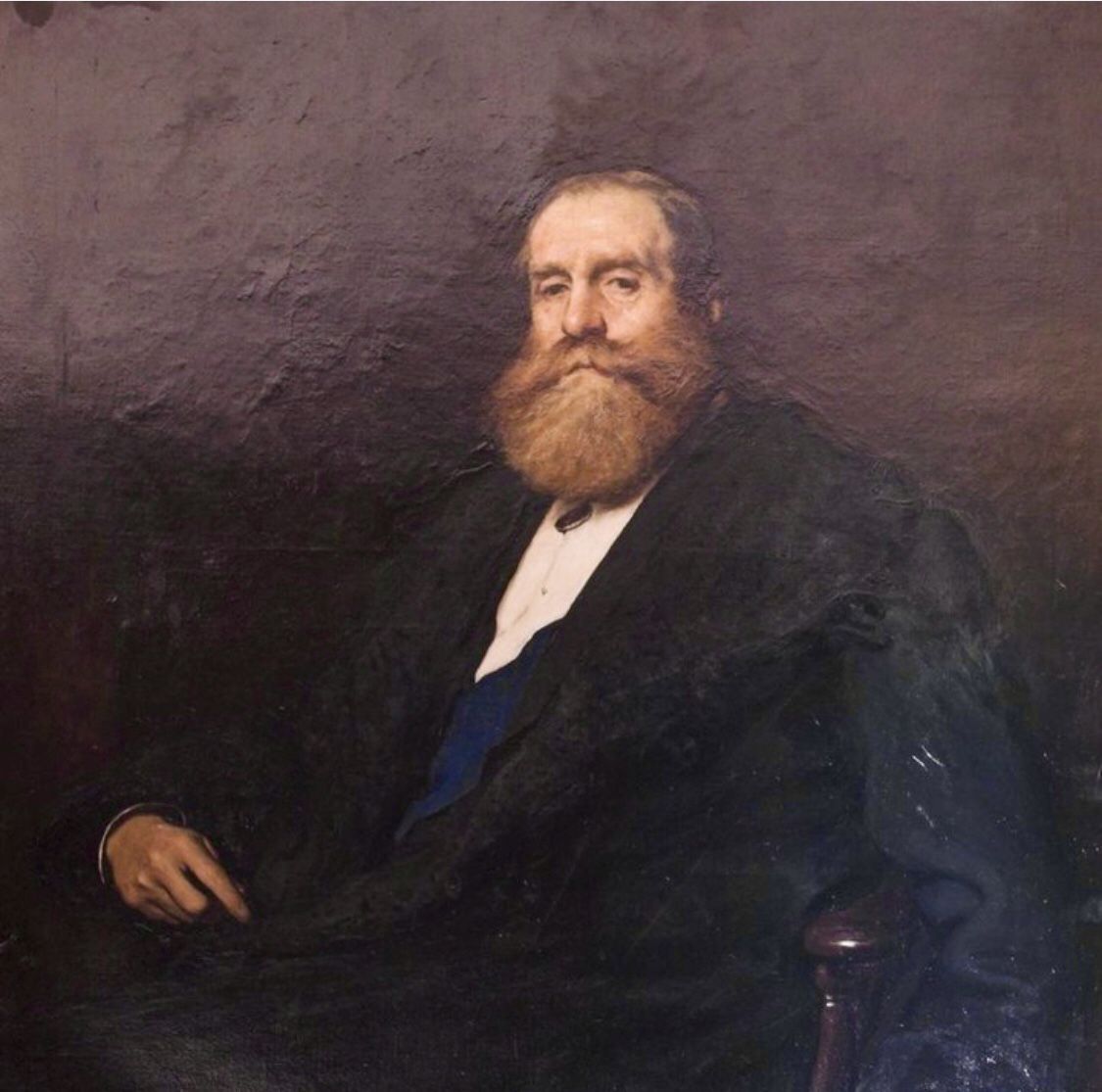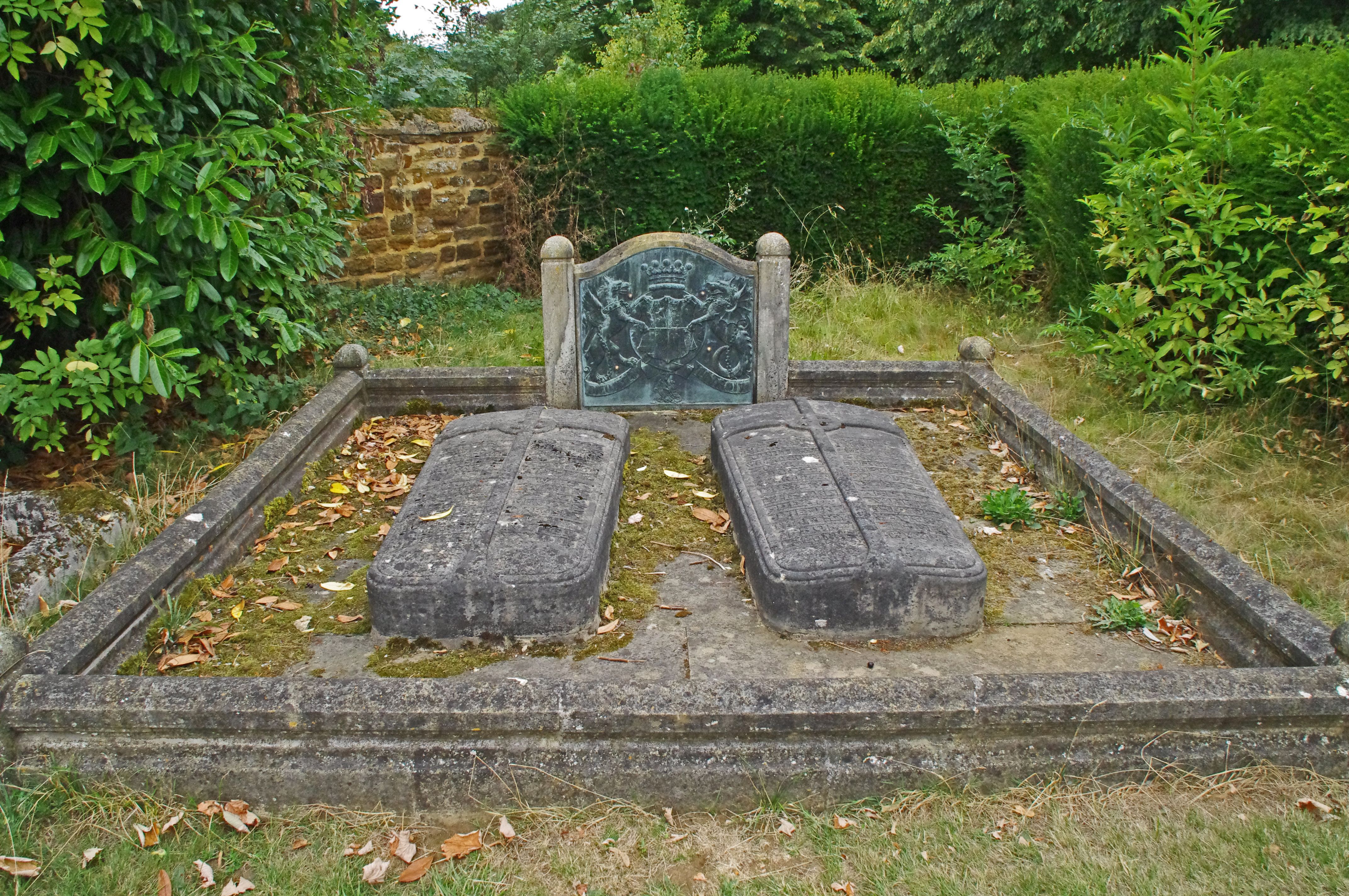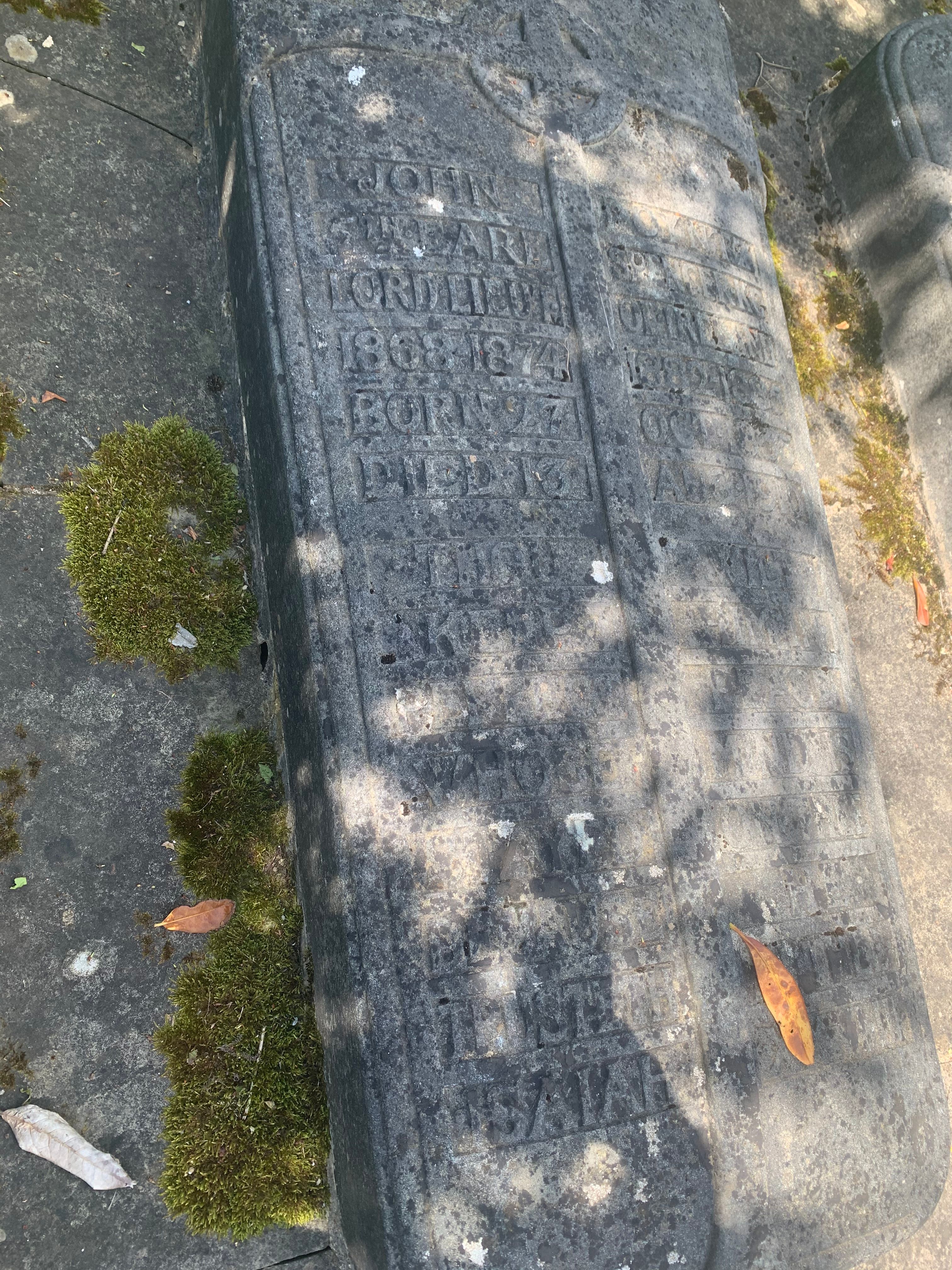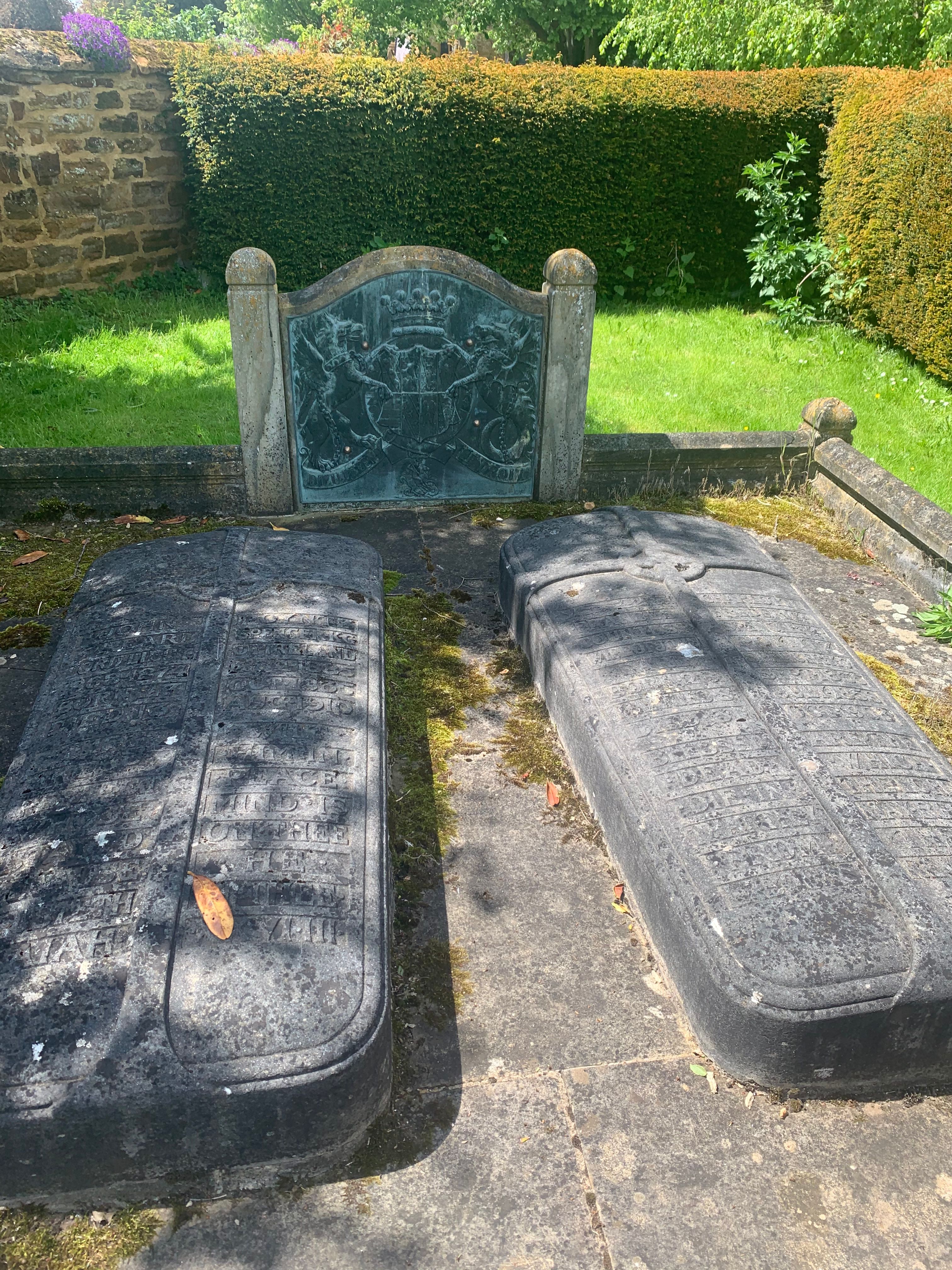Spencer married Charlotte Frances Seymour on July 8, 1858, the youngest daughter of Frederick C.W. Seymour and Lady Augusta. The wedding took place at St. James' Church, Piccadilly. The couple, who were to be dubbed "the Red Earl" and "Spencer's Fairy Queen", set off on a nine-month honeymoon. The nickname "the Red Earl" came about because of Spencer's magnificent red beard. Unable to have children, the couple remained childless. Upon the death of the Red Earl, the Spencer family estate went to his younger half-brother and his heir, Bobby.
For a short while Spencer was Groom of the Stole to Prince Albert, Queen Victoria's consort, from 1859 until Albert's death. He was then asked to become Groom of the Stole to the Prince of Wales and remained Groom for six years, while taking up an active role in politics. Spencer became a Knight of the Garter by the age of thirty-one, an honor usually reserved for much older men. Always keen when it came to public-spirit and generosity, the Red Earl gave Wimbledon Common to the nation in 1864.
Spencer and his wife were sent by Gladstone, a personal friend, to be the Viceroy and Vicereine of Ireland (Lord Lieutenant). They made their official home in Dublin Castle and his years in Ireland were very successful. He was later reappointed to the position in 1882. The Red Earl tried to oversee a fairer system of landlord-tenant relationships. He also argued that the way to gaining more control over Ireland would be for a member of Queen Victoria's direct family to reside there in an official capacity. Both recommendations were denied by Gladstone. When Gladstone's government fell and in 1874, the couple returned to England to Althorp in Northhamptonshire and Spencer House in London. In 1874, Gladstone offered Spencer an elevation from the title of earl to marquess, but the Red Earl preferred his earldom, and declined the honor.
In May of 1882, John again moved to Dublin Castle as Lord Lieutenant after an absence of eight years. Charlotte initially stayed in England and then eventually followed her husband to Ireland. In the summer of 1885 and after much political and terrorist upheaval in Ireland, the Red Earl resigned the office of Lord Lieutenant of Ireland and returned to Althorp and Spencer House. In 1892, he was offered and accepted the post of First Lord of the Admiralty to Queen Victoria. During this period from 1892 to 1895, Spencer saw to it that the naval personal was increased by 6,000, the number of quick-firing guns was added to, the marines were armed with magazine rifles, and extensive harbor works at Gibraltar, Portland, and Dover were begun.
In the late 1880's. the question of Home Rule for Ireland had become one of the bitterest debates in the political arena. The Red Earl stood by his old friend and college by helping to give Gladstone and his cause credibility. By doing so, he became a social pariah to many of his class.
Spencer had always had an obsession with foxhunting and began focusing more of his attention to the sport as he aged, becoming Master of the Pytchley, a post he held until he was nearly sixty. His pastime proved to be very costly, along with the two periods spent as Lord Lieutenant of Ireland. The couple had almost no understanding of money. Financial worries forced Spencer in 1886 to rent out Spencer House in London, followed by the unfortunate sale of the irreplaceable Spencer Library. His hope was to persevere the books in one collection, and for the collection to be readily accessible to British scholars. Spencer's preference to find a British buyer made him settle for the offer of Enriqueta Rylands in 1892 for 220,000 pounds. Ryland was the widow of a businessman from Manchester and wanted to establish a memorial to her husband, John.
In 1904 Spencer suffered a heart attack and then in 1905 he suffered a serious stroke while out shooting on his Norfolk estate. In 1910, John, the 5th Earl Spencer died of a stroke, his younger half-brother Bobby kissed his head before he recorded: "He is now at rest, my dear S. And I must face the horrid domestic difficulties as I best can. looking back, I can see the thing that he lacked was children-yet he took mine to himself. His delight and pride in them was really great: and so was Charlotte's. My dear S. looked most "digne" and find lying on his bed, a weary warrior at rest. R.I.P- My dear old Brother."
Inscription:
JOHN POYNTZ
5TH EARL SPENCER K.G.
LORD LIEUT. FOR IRELAND
1868-1874 1882-1885
BORN 27 OCT. 1835
DIED 13 AUG. 1910
THOU WILT
KEEP HIM IN
PERFECT PEACE
WHOSE MIND IS
STAYED ON THEE
BECAUSE HE
TRUSTETH IN THEE.
ISIAH XXVI : III
Spencer married Charlotte Frances Seymour on July 8, 1858, the youngest daughter of Frederick C.W. Seymour and Lady Augusta. The wedding took place at St. James' Church, Piccadilly. The couple, who were to be dubbed "the Red Earl" and "Spencer's Fairy Queen", set off on a nine-month honeymoon. The nickname "the Red Earl" came about because of Spencer's magnificent red beard. Unable to have children, the couple remained childless. Upon the death of the Red Earl, the Spencer family estate went to his younger half-brother and his heir, Bobby.
For a short while Spencer was Groom of the Stole to Prince Albert, Queen Victoria's consort, from 1859 until Albert's death. He was then asked to become Groom of the Stole to the Prince of Wales and remained Groom for six years, while taking up an active role in politics. Spencer became a Knight of the Garter by the age of thirty-one, an honor usually reserved for much older men. Always keen when it came to public-spirit and generosity, the Red Earl gave Wimbledon Common to the nation in 1864.
Spencer and his wife were sent by Gladstone, a personal friend, to be the Viceroy and Vicereine of Ireland (Lord Lieutenant). They made their official home in Dublin Castle and his years in Ireland were very successful. He was later reappointed to the position in 1882. The Red Earl tried to oversee a fairer system of landlord-tenant relationships. He also argued that the way to gaining more control over Ireland would be for a member of Queen Victoria's direct family to reside there in an official capacity. Both recommendations were denied by Gladstone. When Gladstone's government fell and in 1874, the couple returned to England to Althorp in Northhamptonshire and Spencer House in London. In 1874, Gladstone offered Spencer an elevation from the title of earl to marquess, but the Red Earl preferred his earldom, and declined the honor.
In May of 1882, John again moved to Dublin Castle as Lord Lieutenant after an absence of eight years. Charlotte initially stayed in England and then eventually followed her husband to Ireland. In the summer of 1885 and after much political and terrorist upheaval in Ireland, the Red Earl resigned the office of Lord Lieutenant of Ireland and returned to Althorp and Spencer House. In 1892, he was offered and accepted the post of First Lord of the Admiralty to Queen Victoria. During this period from 1892 to 1895, Spencer saw to it that the naval personal was increased by 6,000, the number of quick-firing guns was added to, the marines were armed with magazine rifles, and extensive harbor works at Gibraltar, Portland, and Dover were begun.
In the late 1880's. the question of Home Rule for Ireland had become one of the bitterest debates in the political arena. The Red Earl stood by his old friend and college by helping to give Gladstone and his cause credibility. By doing so, he became a social pariah to many of his class.
Spencer had always had an obsession with foxhunting and began focusing more of his attention to the sport as he aged, becoming Master of the Pytchley, a post he held until he was nearly sixty. His pastime proved to be very costly, along with the two periods spent as Lord Lieutenant of Ireland. The couple had almost no understanding of money. Financial worries forced Spencer in 1886 to rent out Spencer House in London, followed by the unfortunate sale of the irreplaceable Spencer Library. His hope was to persevere the books in one collection, and for the collection to be readily accessible to British scholars. Spencer's preference to find a British buyer made him settle for the offer of Enriqueta Rylands in 1892 for 220,000 pounds. Ryland was the widow of a businessman from Manchester and wanted to establish a memorial to her husband, John.
In 1904 Spencer suffered a heart attack and then in 1905 he suffered a serious stroke while out shooting on his Norfolk estate. In 1910, John, the 5th Earl Spencer died of a stroke, his younger half-brother Bobby kissed his head before he recorded: "He is now at rest, my dear S. And I must face the horrid domestic difficulties as I best can. looking back, I can see the thing that he lacked was children-yet he took mine to himself. His delight and pride in them was really great: and so was Charlotte's. My dear S. looked most "digne" and find lying on his bed, a weary warrior at rest. R.I.P- My dear old Brother."
Inscription:
JOHN POYNTZ
5TH EARL SPENCER K.G.
LORD LIEUT. FOR IRELAND
1868-1874 1882-1885
BORN 27 OCT. 1835
DIED 13 AUG. 1910
THOU WILT
KEEP HIM IN
PERFECT PEACE
WHOSE MIND IS
STAYED ON THEE
BECAUSE HE
TRUSTETH IN THEE.
ISIAH XXVI : III
Family Members
Sponsored by Ancestry
Advertisement
Records on Ancestry
Sponsored by Ancestry
Advertisement
